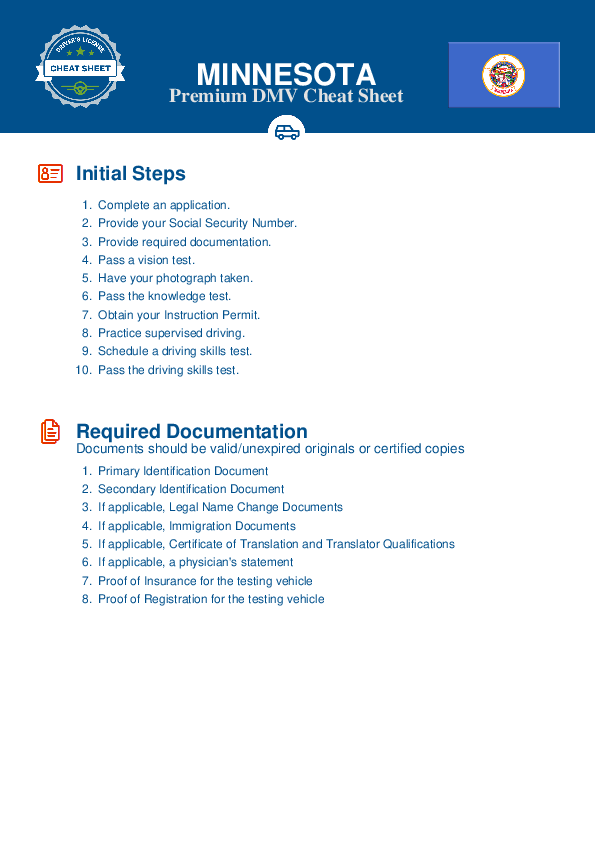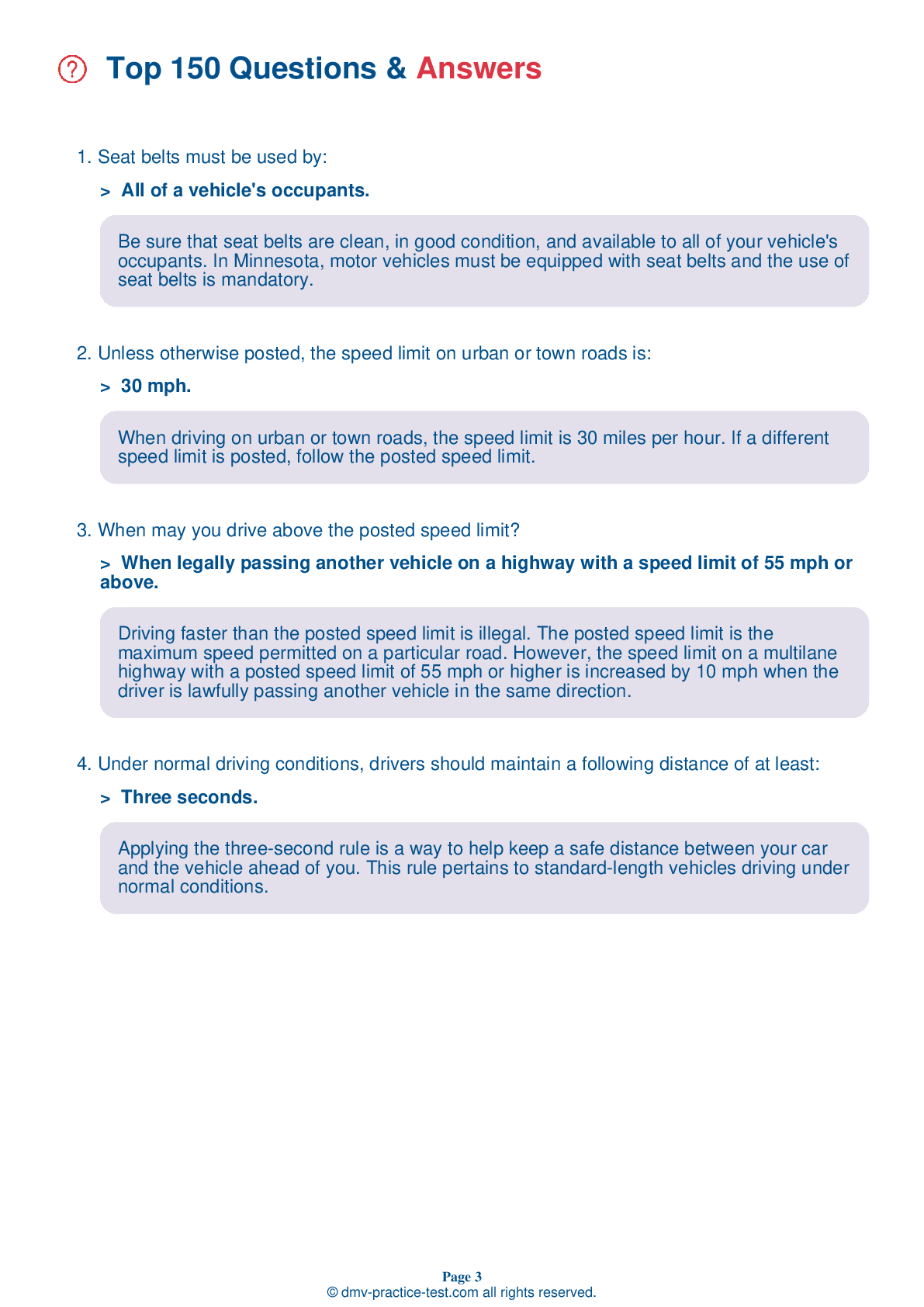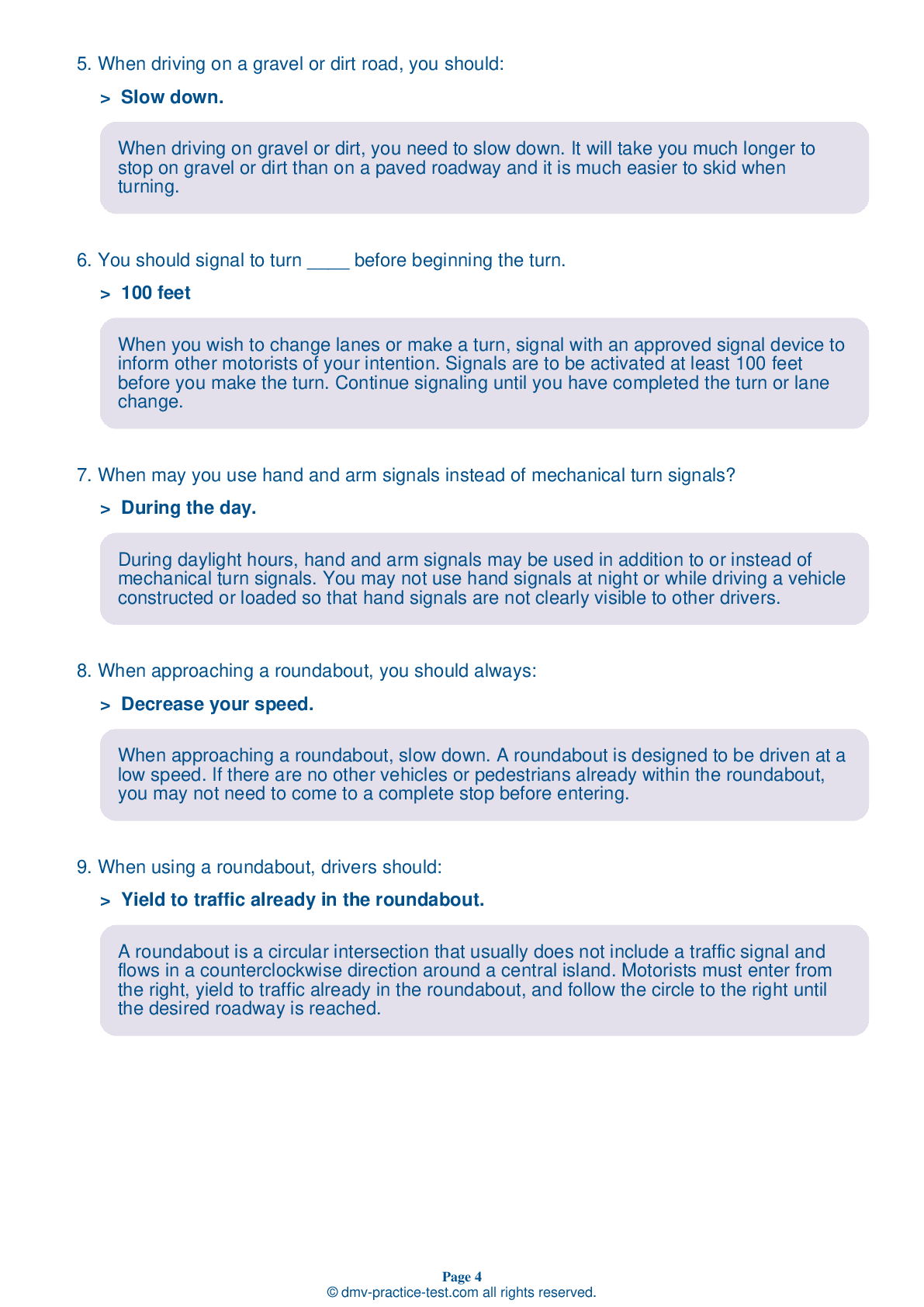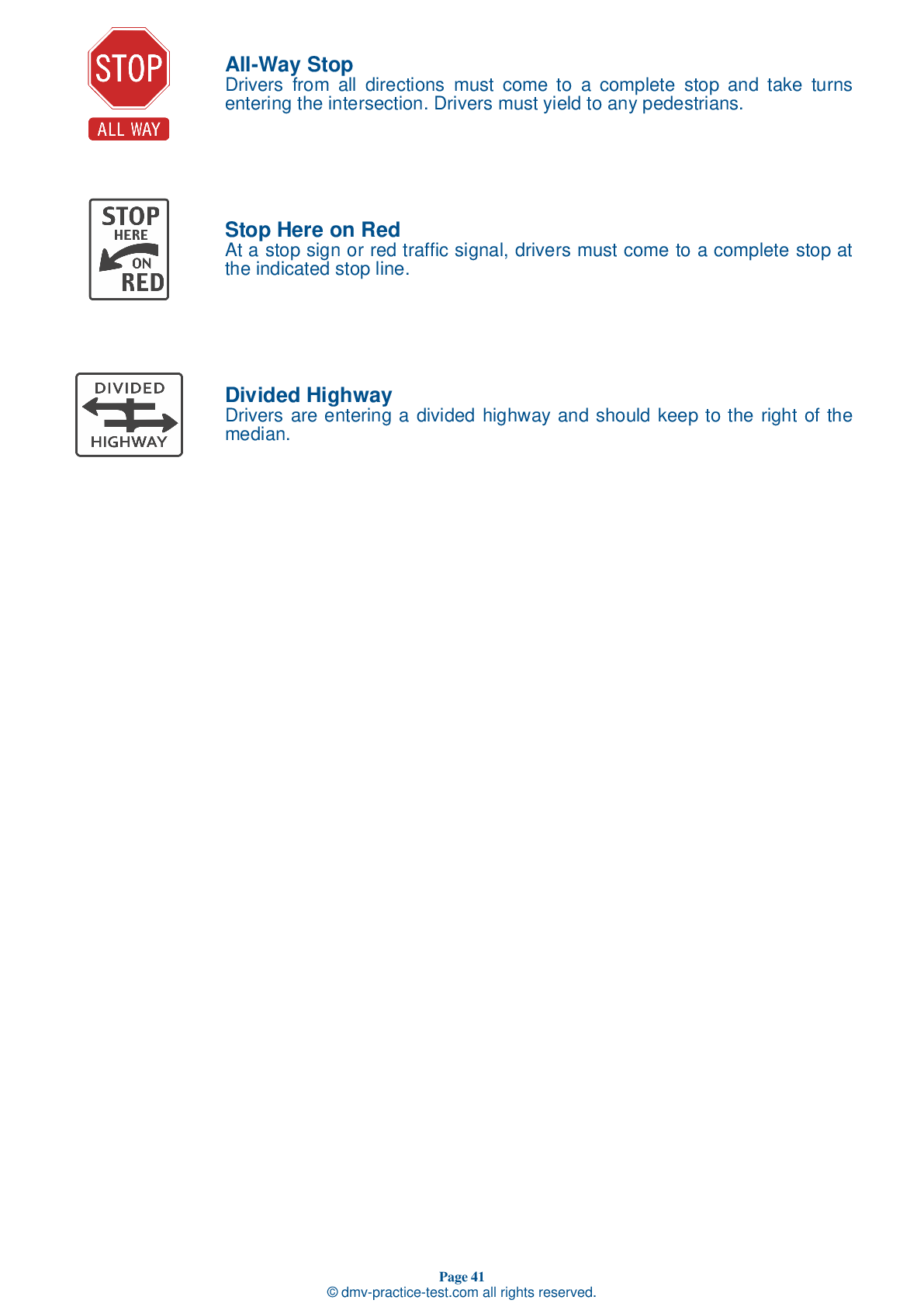FREE Minnesota DMV Practice Test #17 Page 5 of 5
The Minnesota DMV practise examinations have been updated for January 2025. It includes questions based on the Minnesota Driver Handbook's most essential traffic signals and laws for 2025. Use actual questions that are very similar (often identical!) to the DMV driving permit test and driver's licence exam to study for the DMV driving permit test and driver's licence exam.
On the practise exam, each question gets a tip and explanation to help you remember the concepts. The written component of the official Minnesota DMV test will include questions about traffic rules, traffic signs, and driving statutes, as well as knowledge from the Driver Handbook.
To obtain a passing grade, you must correctly answer 32 of the 40 questions. To help you prepare for your instruction permit or driver's licence, take our Minnesota DMV practise test.
The DMV exam is available in several languages.
Using any kind of testing assistance will result in an automatic fail, and the DMV may take additional action against your driver's licence, so stay away from it.
33 . When should you return to your previous lane while completing a pass?
Use your right turn signal after passing and before returning to your previous lane. Return to the right lane when you can see the entire vehicle you have just passed in your rearview mirror.
34 . A work zone:
Work zones are often stationary, but they may also be present in the form of moving vehicles striping lines, mowing, or removing snow. Work zones are marked by orange signs with black lettering or symbols. Slow down and pay extra attention when approaching or driving through a work zone.
35 . This sign means:
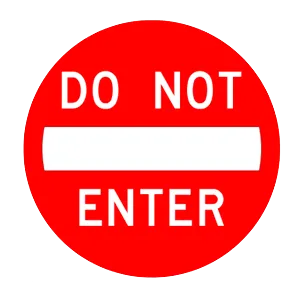
This sign means that it is not safe for drivers to enter the indicated road or driveway from their current direction. If you come across one of these signs, you should immediately turn around and drive a different way.
36 . To reduce the effects of headlight glare at night, you should look:
If oncoming drivers do not dim their headlights for you, keep your eyes on the right side of the road ahead. Do not look directly at the oncoming headlights because the glare may blind you for several seconds.
37 . This sign means:
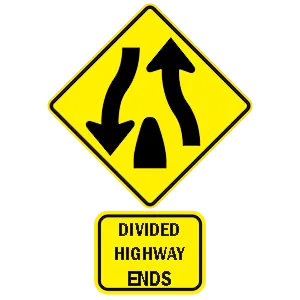
Warning signs are usually diamond-shaped with black markings on a yellow background. They alert drivers to upcoming hazards. This sign indicates that the divided highway is about to end.
38 . When driving on wet pavement, it's important to remember:
Wet roadway surfaces can be dangerously slick, especially immediately following a rainfall. When you are driving on wet roads, your vehicle is traveling on a thin layer of oil, dirt, and water. Slow down when there is heavy rain, standing water, or slush on the road to reduce the risk of your wheels losing traction on the slick surface.
39 . A speed restriction sign:
Curve and turn warning signs often have attached advisory speed signs that show a recommended driving speed for drivers in the curves and turns. Although a driver may feel comfortable driving at a higher speed in fair weather, they should never do so under rainy, snowy, or icy conditions.
40 . When you see this black and yellow sign, it means:

